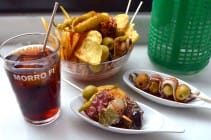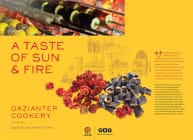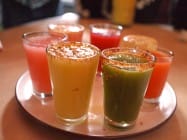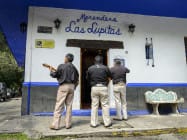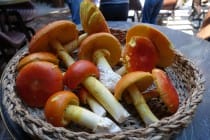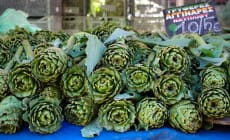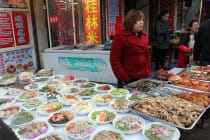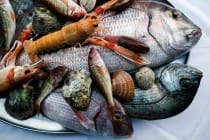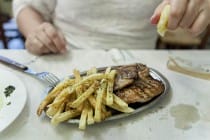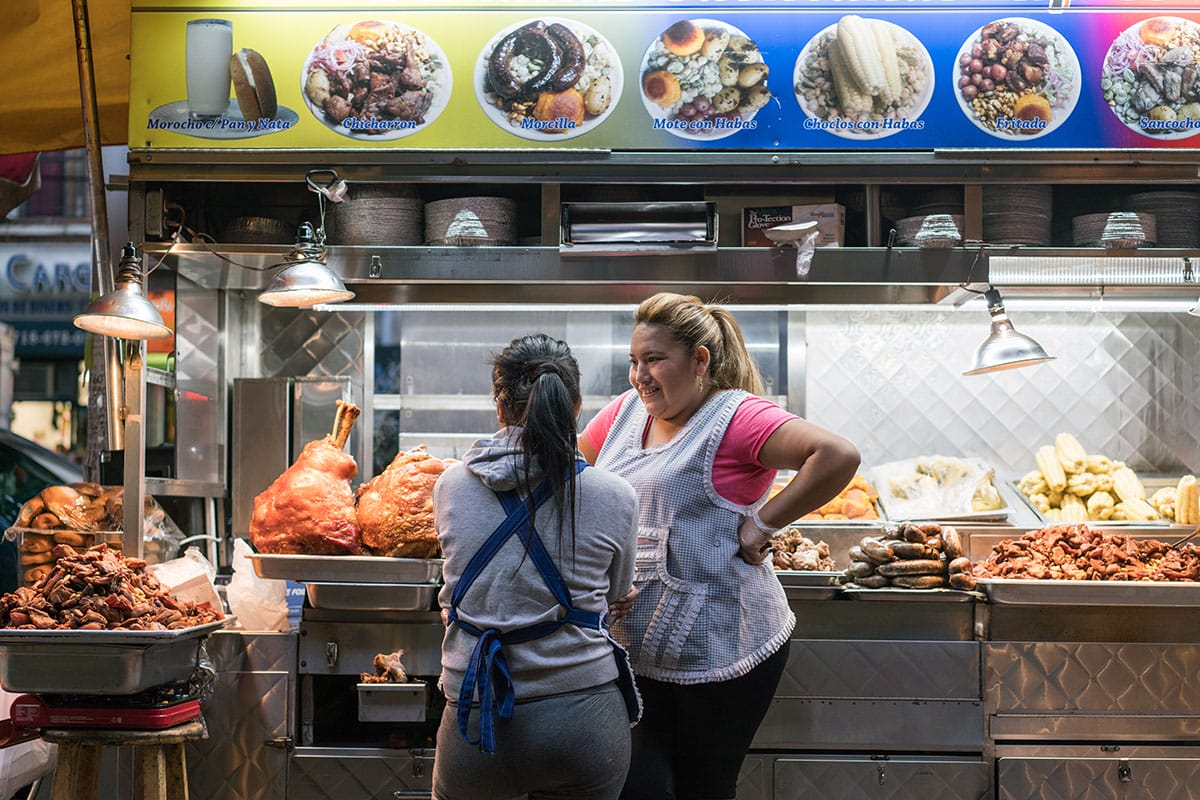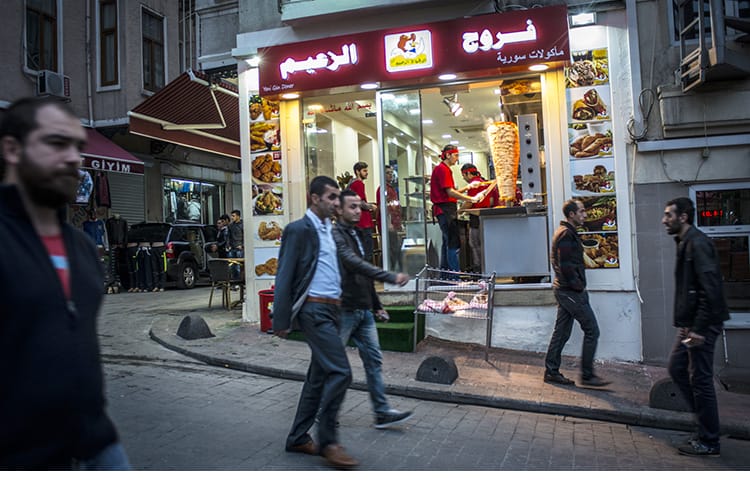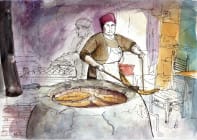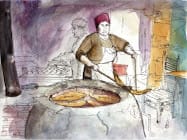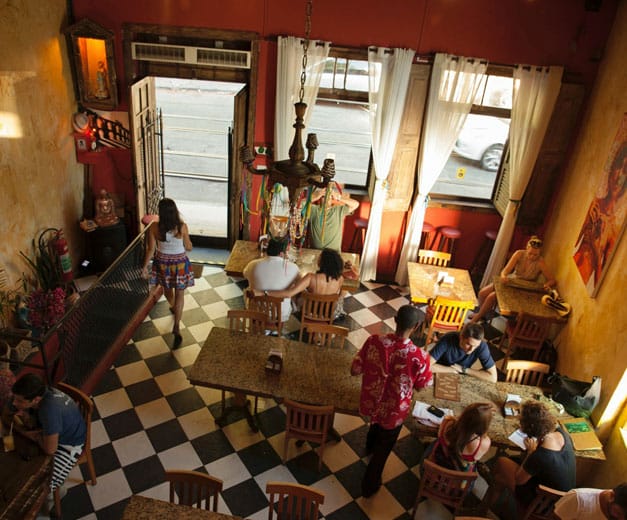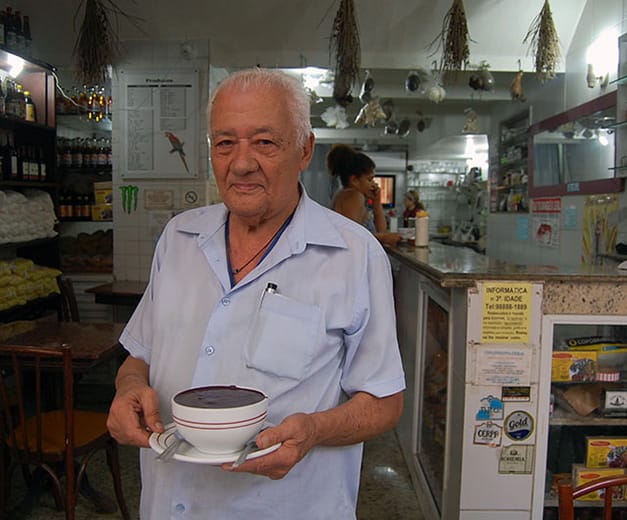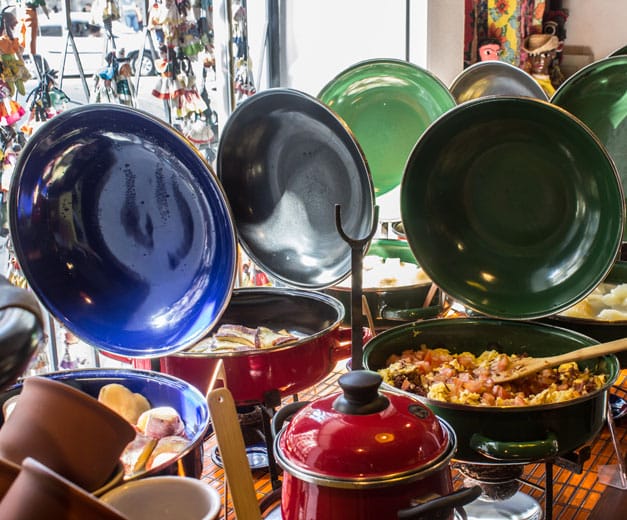In a country the size of Brazil, you’ll have an easier time finding a carioca who’s been to Disney World than to the Amazon region, so cut off is it by vast forests and pricey airfares from the cosmopolitan southeastern cities of São Paulo and Rio. When we visited Manaus and took a days-long boat trip on the Rio Solimões, we introduced ourselves as American, living in Rio. Locals seemed uninterested in asking the usual litany of questions about America but grilled us on Rio, which they had only seen in evening telenovelas.
The way that many Brazils can exist in one big country can also explain why Natacha Fink’s Espírito Santa, in the charming hillside neighborhood of Santa Teresa, is the rare joint that offers authentic Amazonian cuisine in Rio.
Fink grew up near the rivers around the Amazonian capital and industrial port city of Manaus and reluctantly moved to Rio years after her father did, so, unsurprisingly, she knows a thing or two about fish. She’s even written a book about bacalhau (salt cod), a Brazilian staple with European roots, with a focus on the regional fruits that can be paired with it. “Chefs don’t risk working with things they don’t know. For me it’s natural. I grew up in the Amazon. I dominate these things,” says Fink.
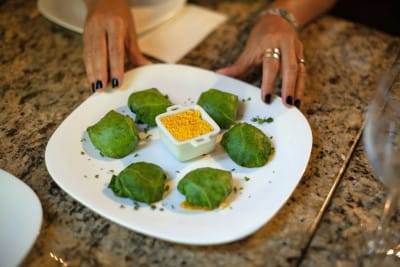 Tambaqui is a fatty freshwater fish with large ribs that can be cooked like beef or pork, she says. It eats only vegetables – unlike, say, the piranha (which is also slang in Brazil for a nymphomaniac) – and has a subtle flavor. The pinheaded pirarucu is famous across Brazil and grows to as large as 175 pounds, which makes for a substantial fillet. The small pacu also has deliciously fatty ribs. For those averse to “fishy” flavors, the tucunaré has the lightest taste. All can be eaten with jambú, a green leaf that lightly numbs the mouth and, according to Fink, brings out other flavors.
Tambaqui is a fatty freshwater fish with large ribs that can be cooked like beef or pork, she says. It eats only vegetables – unlike, say, the piranha (which is also slang in Brazil for a nymphomaniac) – and has a subtle flavor. The pinheaded pirarucu is famous across Brazil and grows to as large as 175 pounds, which makes for a substantial fillet. The small pacu also has deliciously fatty ribs. For those averse to “fishy” flavors, the tucunaré has the lightest taste. All can be eaten with jambú, a green leaf that lightly numbs the mouth and, according to Fink, brings out other flavors.
Fink’s most popular dishes are her cooked fishes with sides such as coconut rice, plantains, Brazil nuts, hearts of palm, or cheese and yucca purée. A best seller is the namorado na folha, pirarucu stuffed with shredded crab and shrimp, baked in collard greens (couve) and then topped with a nut sauce. For the non-pescatarian, Fink’s menu has extensive vegetarian and meat options. We recommend the moqueca de banana, sweet plantains in a rich coconut-milk stew served with rice, and the appetizer bolinhos de queijo coalho, salty white cheese battered and fried and served with bitter açaí sauce.
Drinks and desserts are not to be missed. The Rio staple caipirinha can be made with a variety of Amazonian fruits, such as our perennial favorites, the tart cupuaçú, juicy taperebá and muskily sweet soursop. For dessert, we like the bola preta, a fudge cake coated in chopped Brazil nuts, and the mineira, a tart of white cheese on guava – a combination Brazilians say goes together so well that it’s called Romeu e Julieta.
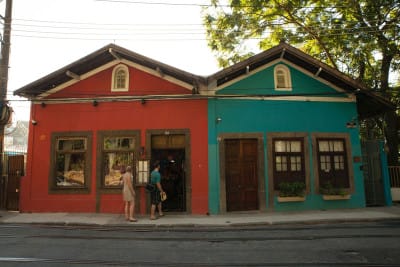 Since opening in 2006, Espírito Santa has rapidly become a citywide reference for uncommon regional cooking, which means that the place is packed in peak hours. That prosperity doesn’t cease to impress native Amazonian Fink. “Brazil has so much. I think it’s good luck that I have. I was able to come from another region and be so successful.”
Since opening in 2006, Espírito Santa has rapidly become a citywide reference for uncommon regional cooking, which means that the place is packed in peak hours. That prosperity doesn’t cease to impress native Amazonian Fink. “Brazil has so much. I think it’s good luck that I have. I was able to come from another region and be so successful.”
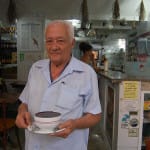 February 22, 2016 Arataca
February 22, 2016 Arataca
Arataca boasts a title so extraordinary that, were it more widely known, we would expect […] Posted in Rio February 5, 2015 Café do Alto
February 5, 2015 Café do Alto
Until a few years ago, breakfast eateries were not very common in Rio. Cariocas would […] Posted in Rio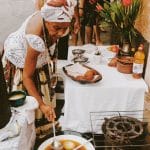 September 6, 2014 First Stop
September 6, 2014 First Stop
Editor’s note: In the latest installment of our recurring feature, First Stop, Tracy […] Posted in Rio
Published on January 20, 2014
Related stories
February 22, 2016
RioArataca boasts a title so extraordinary that, were it more widely known, we would expect the modest Copacabana snack bar to be covered with colorful Nossa Senhora do Bonfim blessing ribbons so that generations of pilgrims could light white, tapered candles and lay baskets of offerings at its sidewalk entrance. That designation is: First Açaí…
February 5, 2015
RioUntil a few years ago, breakfast eateries were not very common in Rio. Cariocas would have breakfast at home or at a bakery, while tourists had to make do with the always-boring "Continental breakfast" offered at hotels. But thankfully, everything has changed. Today, it's easy to find an excellent Brazilian breakfast, especially in South Zone…
September 6, 2014
RioEditor’s note: In the latest installment of our recurring feature, First Stop, Tracy Chang tells us what and where she ate when she was in Rio this summer during the World Cup. Chang headed up marketing and communications for Martín Berasategui at his three-star Michelin restaurant in San Sebastián, Spain, and, upon returning to Boston,…

















